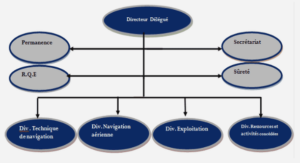Extrait du course developing the teaching of listening comprehension in english
…….
B-WHILE LISTENING ACTIVITIES
While-listening activities relate directly to the text, and students do them during or immediately after the time they are listening. If students are to complete a written task during or immediately after listening ,the teacher should allow them to read through it before listening. Students need to devote all their attention to the listening task . The instructions should be explained for the task before listening begins so that they are not distracted by the need to figure out what to do.
Writing should be kept to a minimum because the primary goal is comprehension, not production. Having to write while listening may distract students from this primary goal. If a written response is to be given after listening, the task can be more demanding . Tasks have to be organized so that they guide listeners through the text.
Global tasks such as getting the main idea or topic have to be combined in a way in order to have students’ attention focused on the elements of the text crucial to comprehension of the whole. Before the listening activity begins, the students need to review questions they will answer orally or in writing after or while listening.
Sample while-listening activities
• listening with visuals
• filling in graphs and charts
• following a route on a map
• checking off items in a list such as true/false or mcq
• listening for the gist
• searching for specific clues to meaning
• completing cloze (fill-in) exercises
C-POST LISTENING
After listening , comprehension may be evaluated through a particular task in order to measure the overall progress in listening . At this stage ,the teacher has to decide if the tasks used were appropriate for the listening purpose. There are two common forms that post-listening tasks can take. These are reactions to the content of the text, and analysis of the linguistic features used to express the content.
Reaction to the text
Of these two I find that tasks that focus on students reaction to the content are most important. Again this is something that we naturally do in our everyday lives.
Because we listen for a reason, there is generally a following reaction. This could be a discussion as a response to what we’ve heard – do they agree or disagree or even believe what they have heard? – or it could be some kind of reuse of the information they have heard.
Analysis of language
The second of these two post-listening task types involves focusing students on linguistic features of the text. This is important in terms of developing their knowledge of language , but less so in terms of developing students’ listening skills.
It could take for example the form of an analysis of verb forms from a script of the listening text . This is a good time to do focused work as the students have already developed an understanding of the text and so will find dealing with the forms that express those meanings much easier.
……..
Sommaire: Developing the teaching of listening comprehension in english
Introduction
Methodology
PART ONE : LITERATURE OVERVIEW
CHAPTER ONE : FOREIGN LANGUAGE LISTENING COMPREHENSION
1.1 -What is listening ?
1.2 -The constituent elements of listening comprehension
1.2.1-Speech perception
1.2.2-Recognizing spoken words
1.2.3-Parsing-understanding the syntactic structures of sentences
1.2.4- Comprehension
1.3 -Teaching / Developing the listening skill
1.4 -Testing the listening skill
CHAPTER TWO : FACTORS AFFECTING LISTENING COMPREHENSION
2.1- The characteristics of texts
2.1.1-Speech rate and listening comprehension
2.1.2-The effect of pauses on listening comprehension
2.1.3-Pronunciation and intonation
2.2-Spoken texts and written texts read aloud
2.3-The characteristics of listeners
2.4-The processes of listening comprehension
2.5-The role of non-verbal communication
CHAPTER THREE : THE IMPORTANCE AND ROLE OF LISTENING COMPREHENSION AS A PREREADING IN FOREIGN LANGUAGE LEARNING
3.1- Receptive and productive skills : priority of listening
3.2-Parallel processes of listening and reading comprehension
PART TWO : FIELD WORK
1-The questionnaire
1.1-Introduction
1.2-Results and analysis
2- The experimental study
Introduction
2.1-The content and rationale of the listening course
2.2-The topics
2.3-The research method
2.4-The observation grid
2.5-The pre-test and post-test
2.6-The ‘t’ test
Conclusion
Bibliography
Appendices
Developing the teaching of listening comprehension in english (544 KO) (Cours PDF)





